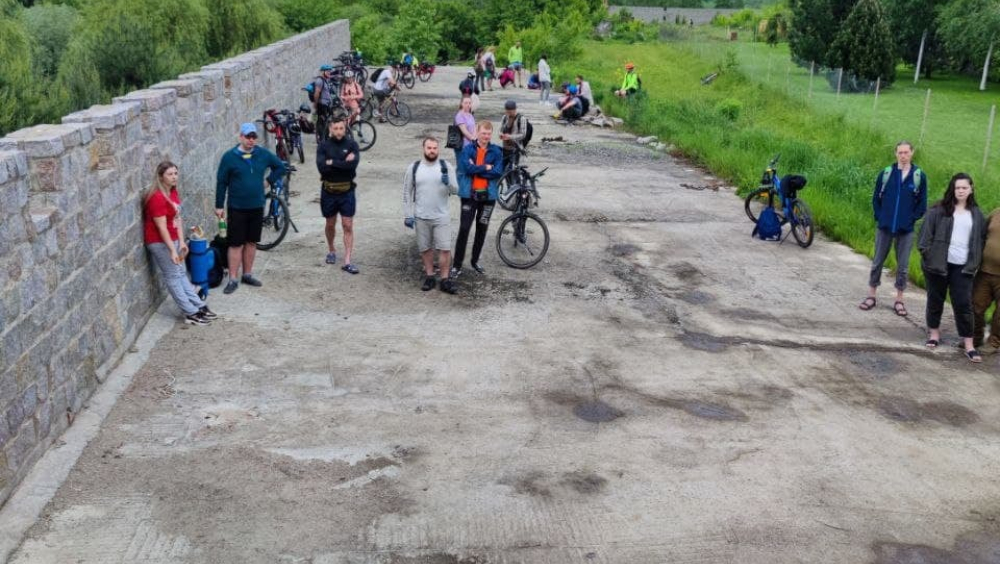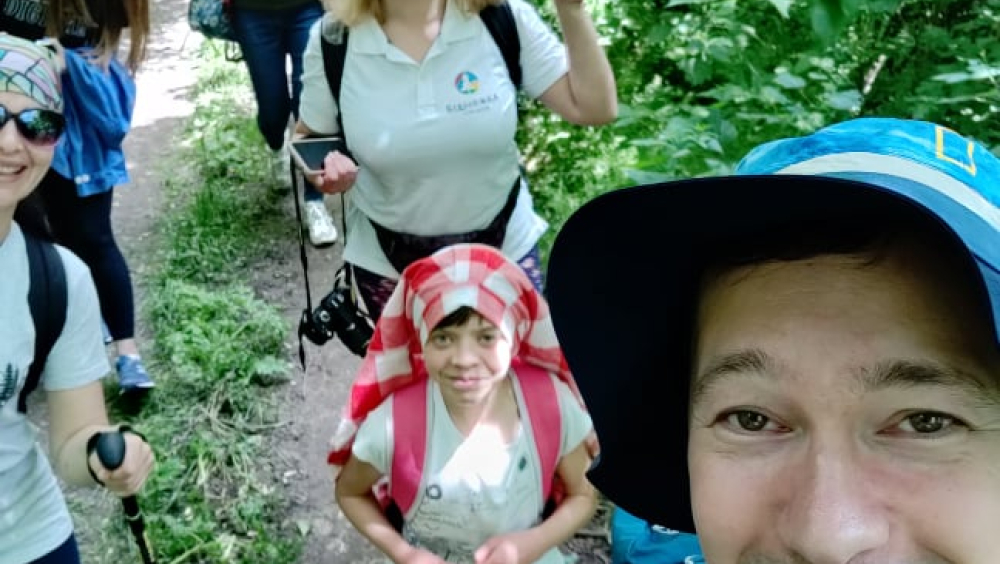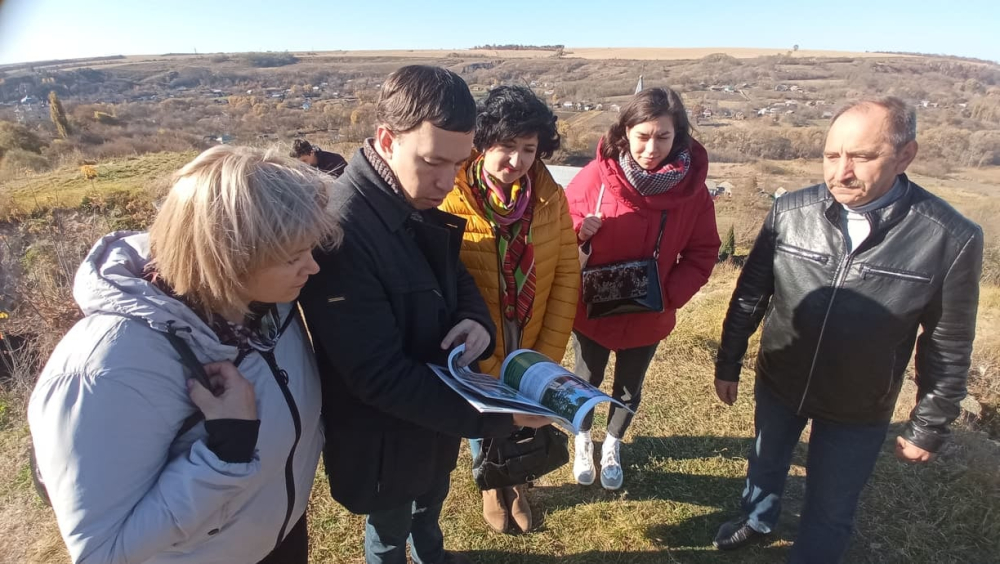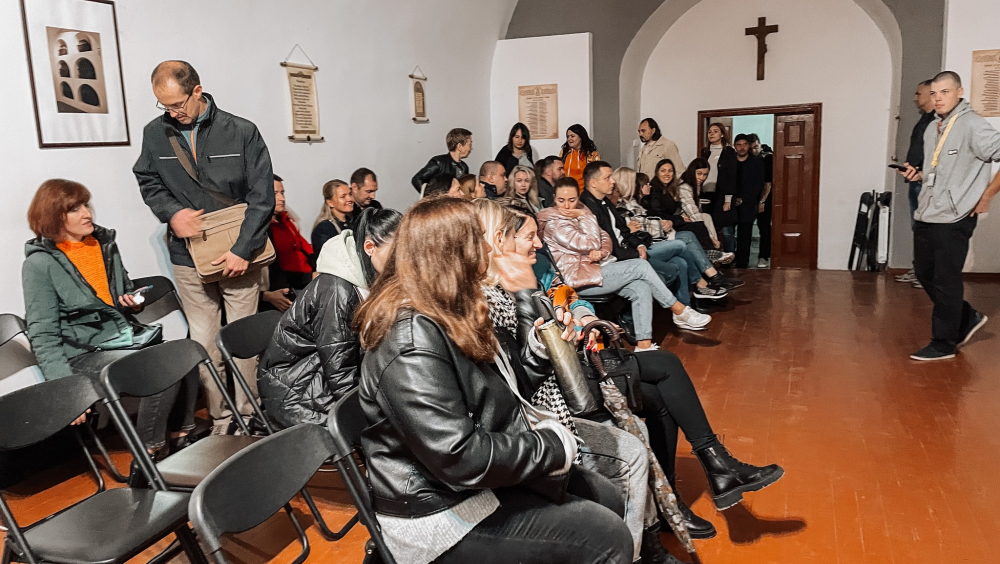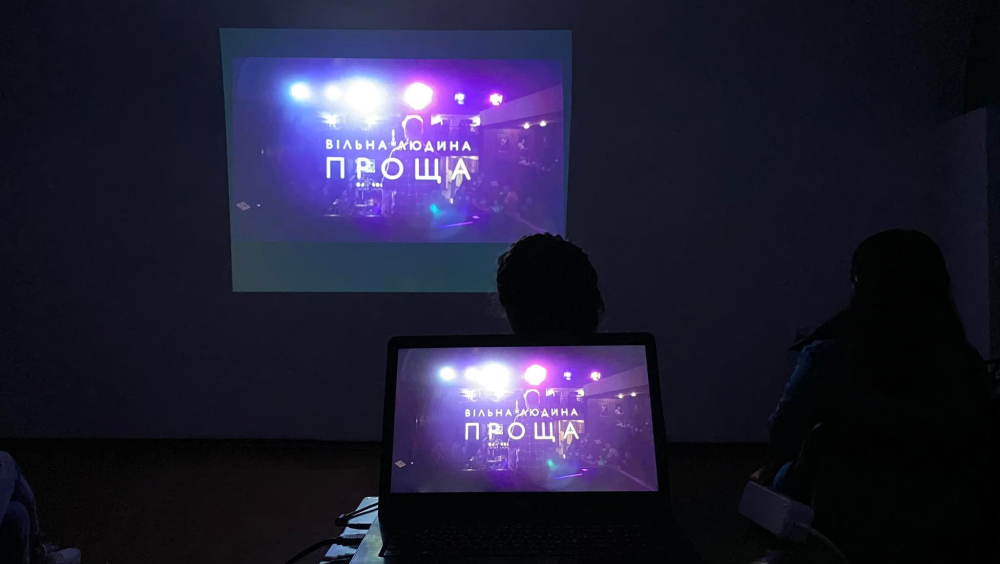The way surrounded by blue and yellow
Country
Ukraine
Organization name
Depatrment of city marketing and tourism development
Storyteller
Valentyna
E-Mail: pikulska.valentyna@gmail.com
Overview
Camino Podolico or St James Way of Podillia became the first officially organized walking and cycling cultural route in Ukraine. It runs through the picturesque cities of Podillia - a Ukrainian historical region through which more than seven centuries of European history can be seen, reflected in sacred and secular buildings, local stories and traditions.
The route connects the two historical centers of Podillia - Vinnytsia and Kamianets-Podilskyi by a historical road through the town of Bar. Unique examples of Catholic and Orthodox architecture, remains of ancient fortresses, palaces and estates, as well as unique nature along rivers and canyons await travelers on their way. The route was launched in test mode only in 2021 but more than 150 pilgrims from different regions of Ukraine - representatives of different ages, social, professional and worldview groups - have already passed through it. Objects of cultural heritage on the route gain increased attention to themselves, which stimulates the owners and local communities to restore them and fill them with new content.
In 2022, a full-fledged pilgrimage season, several related activities and the extension of the route to the border with the EU were planned. However, due to the invasion of Russia on the territory of Ukraine and constant missile attacks on all its regions, the development of the route had to be suspended for a whole year. The very existence of cultural monuments is now under threat and this has been felt by Vinnytsia too, where on July 14 rockets destroyed the local Palace of Culture and damaged a museum and a church. However, Camino Podolico continues to inspire and unite: during wartime, some charity events took place around the project. In 2023, all communities are waiting for Ukraine’s victory to continue the development of the route and promote the cultural heritage of Podillia.
The idea of establishing a cultural route between Vinnytsia and Kamianets-Podilskyi - the two centers of the historic region Podillia - arose several years before I came to the local tourism department. The Ukrainian section of the world-known St James Way was a dream for many people. But for me it also was an important step towards knowing myself and my skills. All this happened at the beginning of 2021 when I had just finished my studies at the Faculty of History, and the COVID-19 pandemic continued to rage around the world. People dreamed of finally breaking out of the four walls of their isolation.
The moment when I felt the reality of this idea was an event on the outskirts of Vinnytsia. We managed to invite hundreds of travelers who were able to finally get together after a long lockdown. The culmination of this weekend was the testing of the first 20 kilometers of the new route - Camino Podolico, the St James Way of Podillia. For me, it was quite a challenge because I had no experience with long hiking routes at that time, in combination with controlling the organizational moments.
However, from the first hundreds of meters, some new sources of strength opened up: all the way you walk along forests, fields and the river, you see people grazing cattle, having a picnic on the shore, or trying to walk a distance of several kilometers for the first time in their life - just like yourself. I was especially impressed by a 12-year-old girl, Eva, who asked to walk this path without being accompanied by her relatives or friends.
We got almost everything that surrounds the classic Camino, both heat and rain, an incredibly tasty and nutritious pilgrim's meal from locals, and most importantly - a touch of ancient history. Arriving at the next point of the route after Vinnytsia - Selyshche we saw the remains of the castle and the Dominican monastery, which impressed us. Practically in every settlement along the way, even small villages, there are monuments or some remnants that tell about the rich history of Podillia and its inhabitants.
Since July 2021, we have developed all the necessary materials (map, online track, and even a pilgrim's passport), offering to walk 252 kilometers with 12 stops. And after a few weeks, we were surprised by how quickly and how many different people from different parts of the country decided to go through the route. People went alone, in pairs, with children or even pets, walking, biking and running.
The communities saw the interest in their heritage, and we got to know real fans of local culture - from researchers of the history of castles in Bar and Zinkiv to saviors of palaces in Severynivka and Maliivtsi. Each of them managed to unite the local government, businesses and activists around themselves, to gain support for the preservation of existing and reconstruction of lost heritage. We all felt how Camino Podolico unites and strengthens our local initiatives.
We started 2022 with big plans and even set a date for the start of the season - April 25. I set a goal for myself too - to finally complete the entire route and capture this unique experience. But everything did not turn out the way we wanted.
On February 24, Russia began a full-scale war against Ukraine. Realizing that nowhere in the country can be safe now, we decided not to encourage people to make a pilgrimage while enemy missiles fly overhead. Although this didn’t stop adventurers, who not only went on a journey but also collected donations through social networks. It was also a form of struggle - to walk for the sake of supporting Ukraine.
Wounds are also present in Vinnytsia, testifying the death of civilians and the destruction of cultural monuments, and because of this, the fragility of our heritage is even more visible. After the tragic missile-attacks on July 14, it was important for us as European Heritage Days organizers to gain attention to the monuments lost in the past, and to Camino Podolico. We held several screenings of the documentary "Free Man. Pilgrimage" about the Ukrainian traveler and combatant Valeriy Markus, who decided to walk the Camino de Santiago a few years ago, after being injured at the front. Through his books and videos, he became an influencer for many Ukrainians.
We watched this film in the dungeons of the Vinnytsia Capuchin Monastery - a place that was built back in the 18th century precisely as a shelter in case of enemy attacks. Seeing how this courageous man overcame his inner traumas and fears and found a new meaning in life, I felt that I, too, haven’t lost the purpose for which I worked so much effort. I still think every day about how to bring life back to our initiative, and how not to stop at those first few kilometers of the path that I and my like-minded people walked in 2021 - literally and figuratively.
The war has been going on for a year, and today (I’m writing this story on February 22) we don’t understand what awaits us - a new attack or a long-awaited victory. But just as Ukraine, at the cost of great losses and pain, is moving towards reuniting with Europe, I want Camino Podolico to be able to merge into the great blood system of the European Ways of St James, which provide so many resources for the preservation and sharing of heritage.
After hearing it once, you will never let go of the traditional greeting that leads you in the direction of the sun: Buen Camino! Especially when this path is surrounded everywhere by yellow and blue.
If you want to support our initiatives and help realize the dream of developing the route, write to caminopodolico@gmail.com.
European Dimension
Camino Podolico runs through the cities and towns of Podillia, a region that has been the eastern edge of Christian civilization in Europe since the 14th century, bordering the Wild Fields. The status of the border region influenced both the development of cities and the traditions of self-government, as well as their cultural contribution in the form of tangible and intangible heritage. Many educational and religious missions visited these regions, and later many outstanding architects, gardeners, educators and artists were there, sharing their talent throughout the lands of Podillia. With the transition of the territory from Poland to the Russian Empire, ethnic and religious diversity was preserved here, which is especially noticeable in the history of the Ukrainian, Polish and Jewish communities.
The relevance of the European dimension of the route is emphasized by the compliance with the main criteria of the Cultural Routes of the Council of Europe, in particular, promoting the strengthening of history and heritage, establishing ways for intercultural dialogue, mutual exchange and support of cultural diversity and identity, the implementation of democracy and human rights.
By uniting the territorial communities of Podillia, the project crystallizes the issues of cultural heritage and tourist resources, cooperation between local self-government institutions, a wide range of public, and economic entities and social initiatives. Considering that the Camino Podolico was created by the model of the well-known Camino de Santiago, the real prospect of the route's development is the integration into the European Federation of Saint James Way, the involvement of youth, socially vulnerable categories of the population in knowledge and communication through heritage. The key partner in this will be Lithuania, where the sister city of Vinnytsia - Panevezys - had a significant role in developing this cultural route and sharing knowledge with Ukraine.
